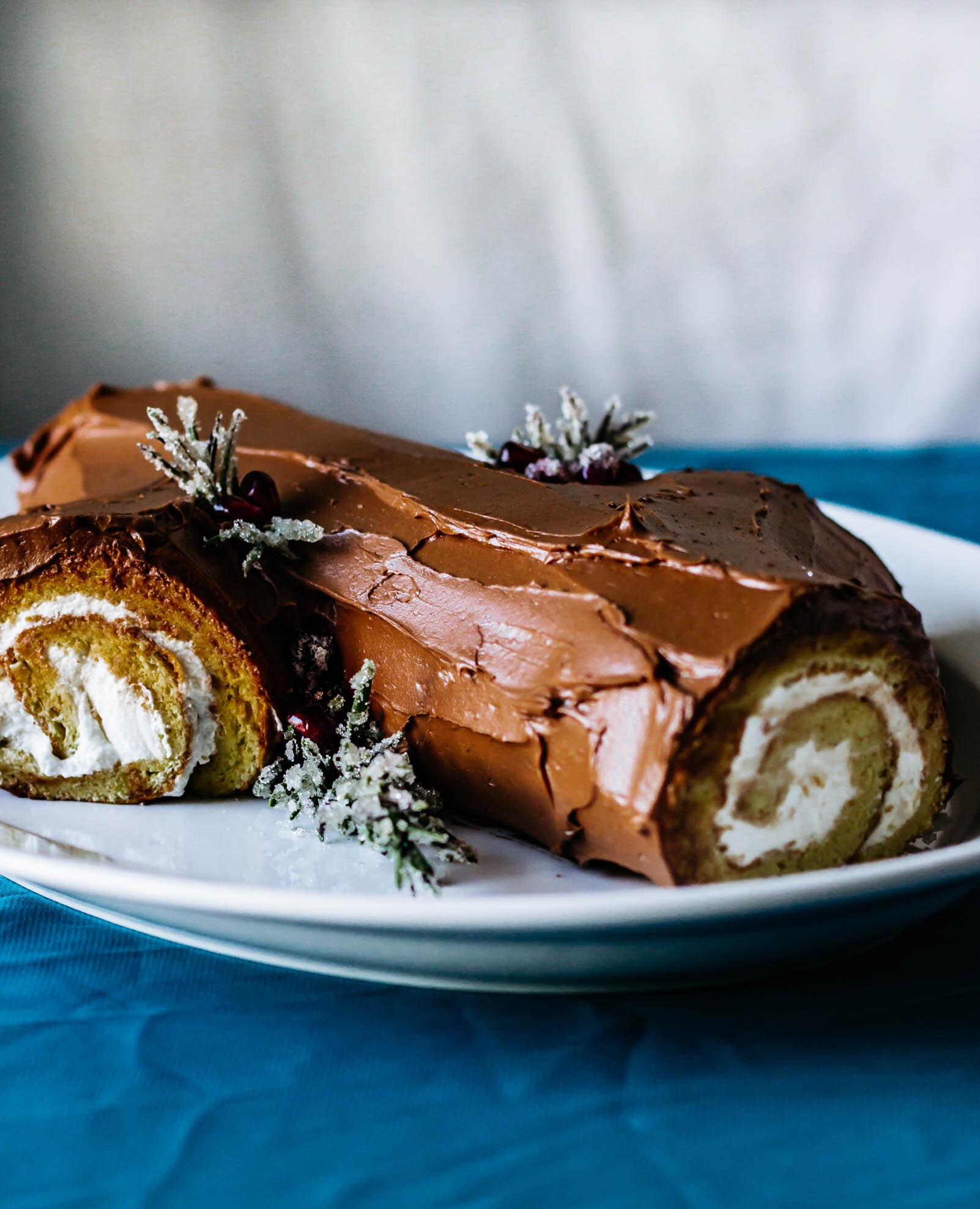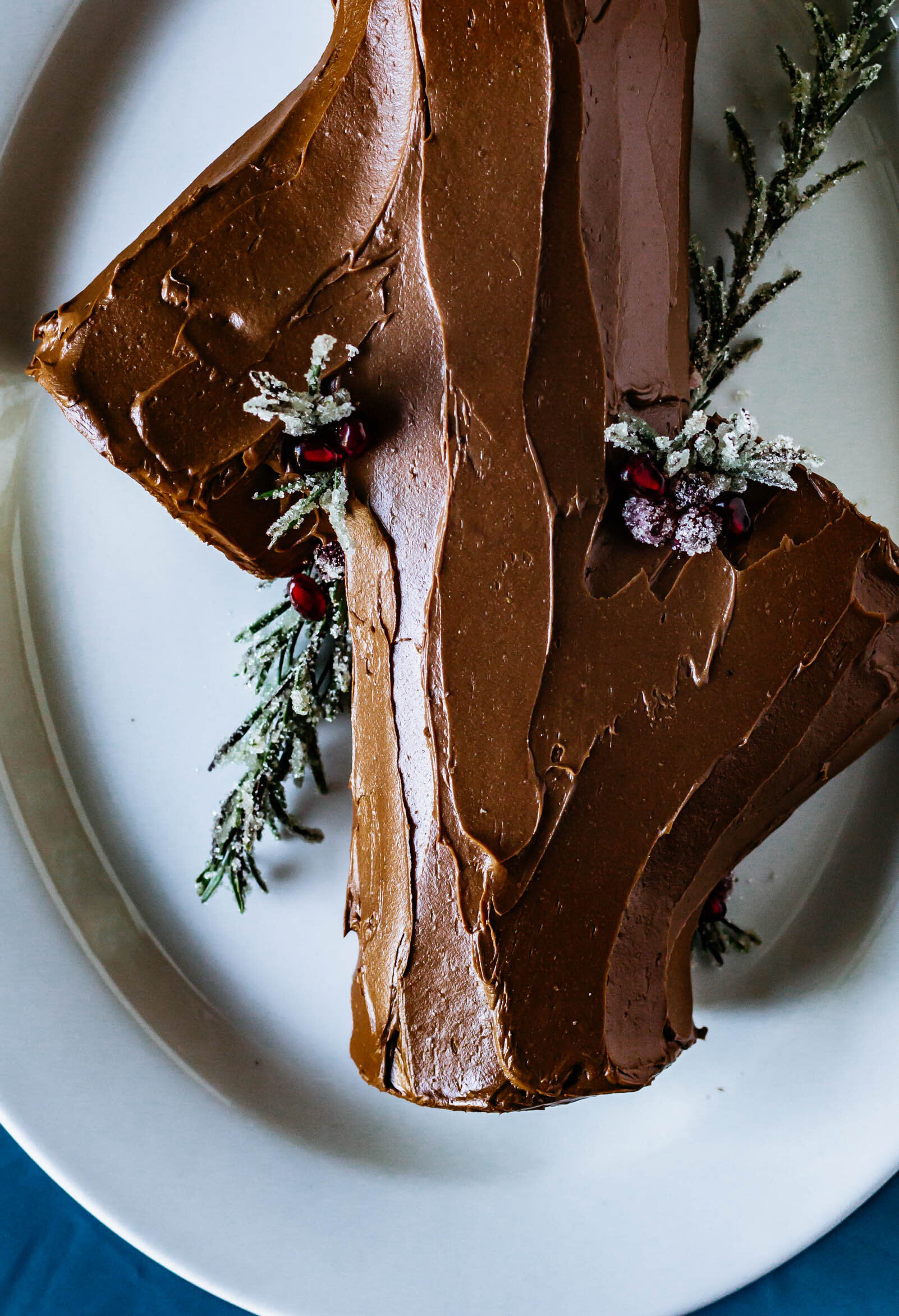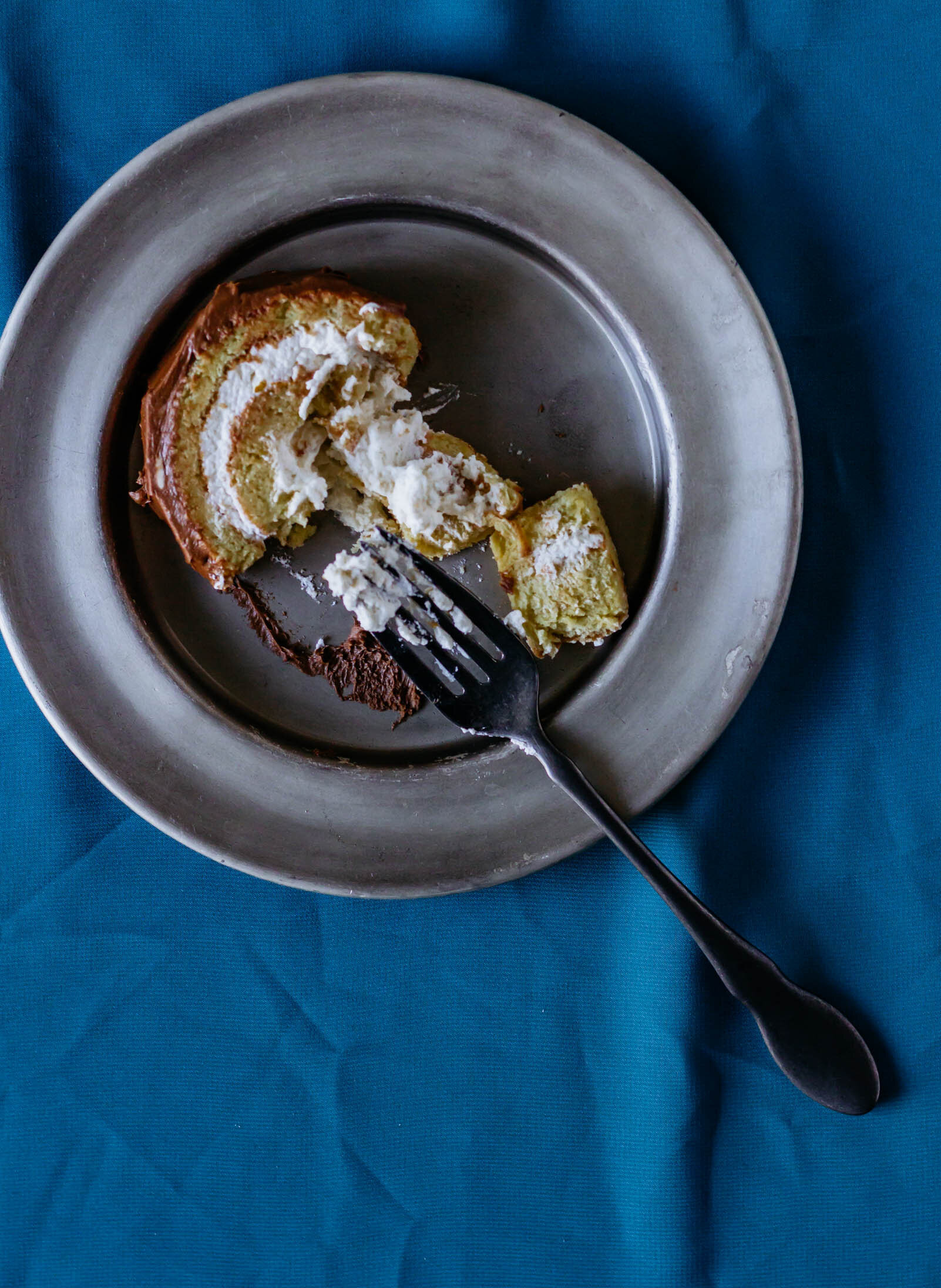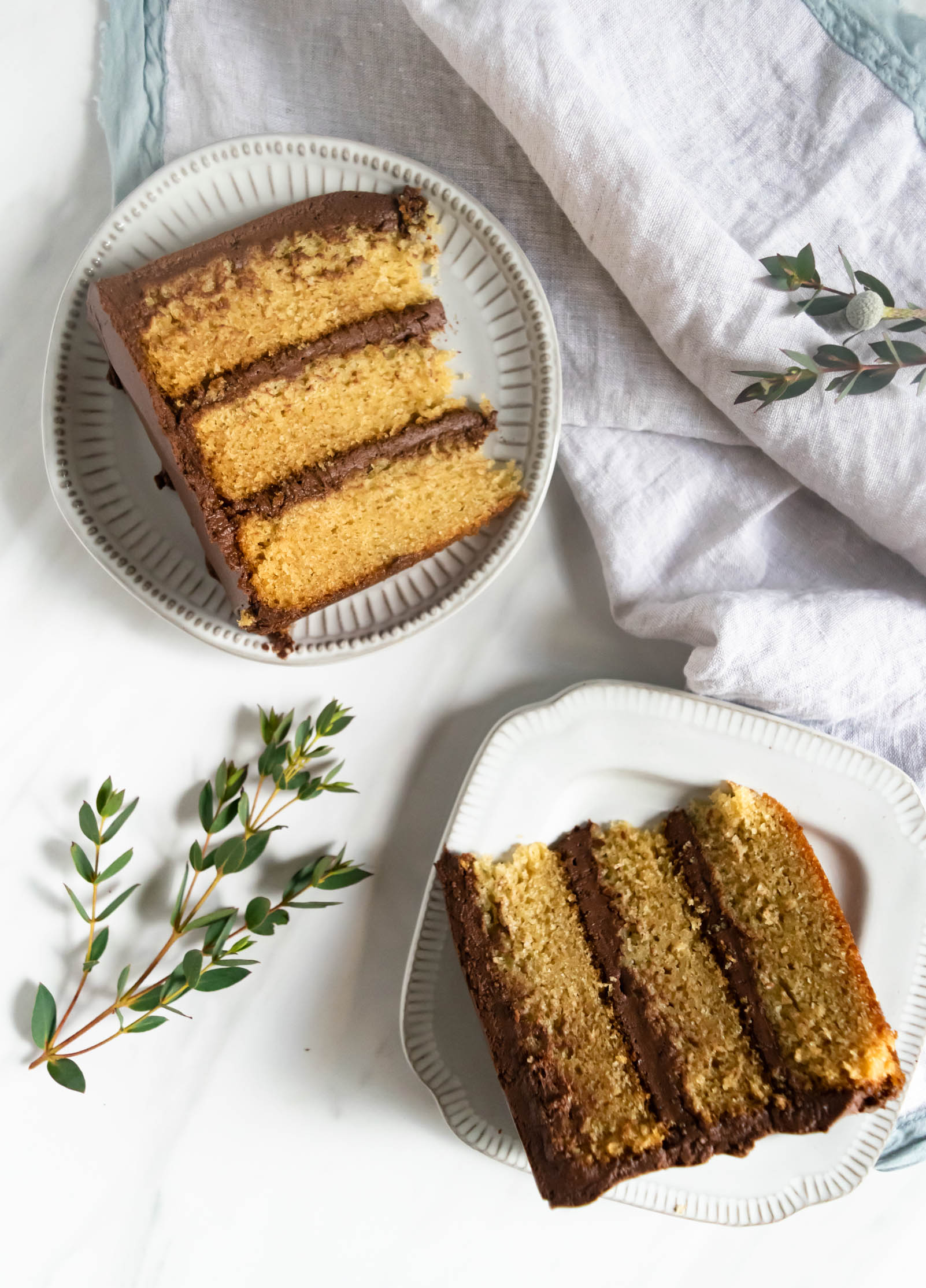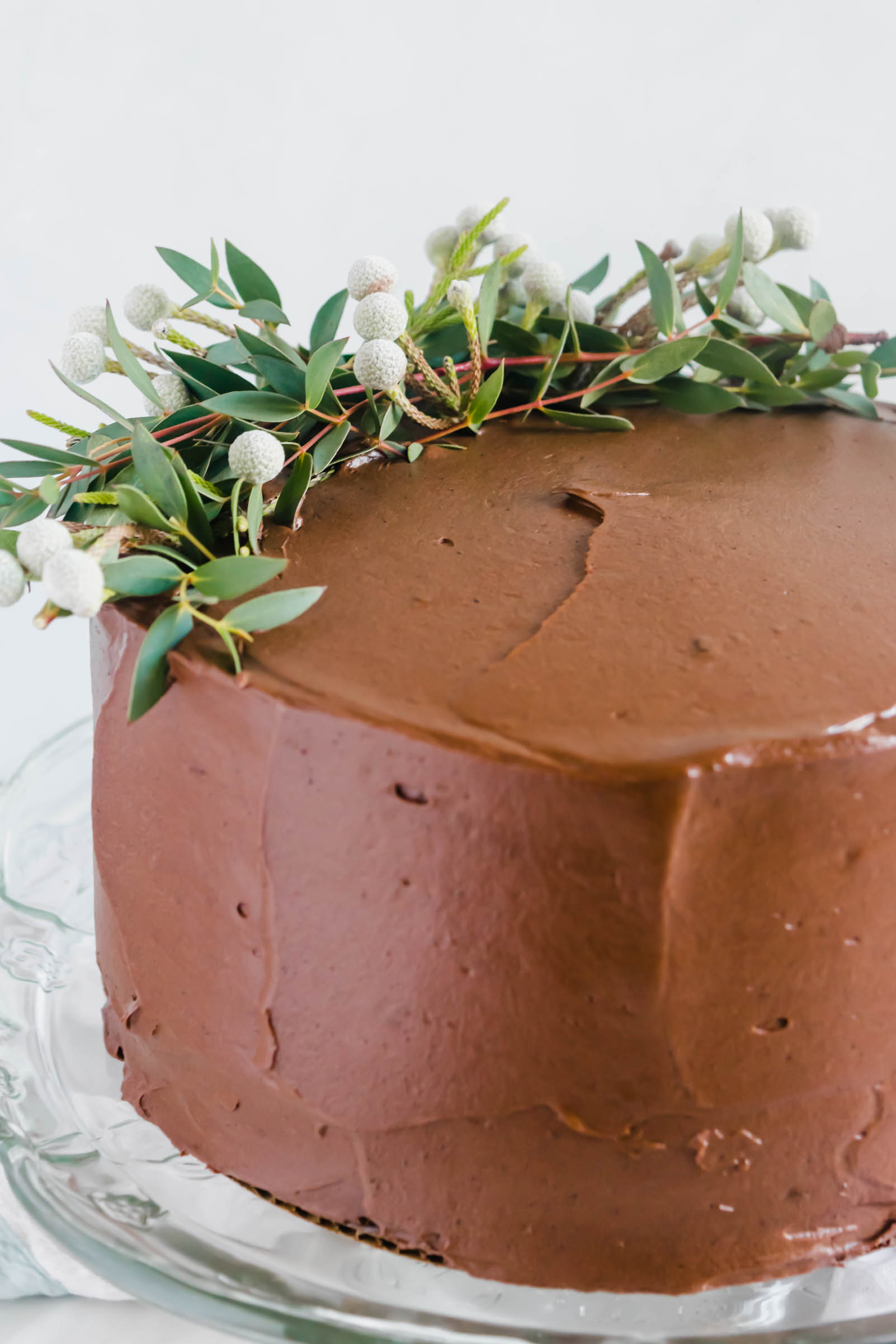Cardamom, Orange, and Ricotta Buche De Noel
/Merry Christmas Eve, friends! I hope you are still in your pajamas, sipping coffee, baking cookies and watching Christmas movies. I took on one last freelance recipe development project for the year, which I finished up late last night so as soon as I click “publish” on this blog post, I’m on vacation! Since I’ve been working all week, I haven’t baked one single Christmas-y treat so today, I’ll be deep in cinnamon roll dough and banana bread. I cannot wait.
But first, no Christmas dessert collection is complete without a Buche De Noel (or a Yule log cake). These are far simpler than they look. A Buche de Noel aka roulade aka jelly roll is simply a sponge cake, filled with some sort of cream or jelly, rolled and frosted to look like a Yule log. My rendition features a cardamom and orange flavored sponge, an orange ricotta cream reminiscent of cannoli filling, and a chocolate cardamom buttercream. There are so many different ways to decorate your cakes, do a simple google search for ideas and make it your own!
After 12 days of brand new recipes here on the blog, I’ll be taking a few weeks off. I have a new baby niece that I’m dying to snuggle and we are right in the middle of buying our first home so I’ll be packing and unpacking like a mad woman. It’s been a wild year, but I’ve been so blessed to be able to share it with you all in my little baby internet food community. See you in 2021!
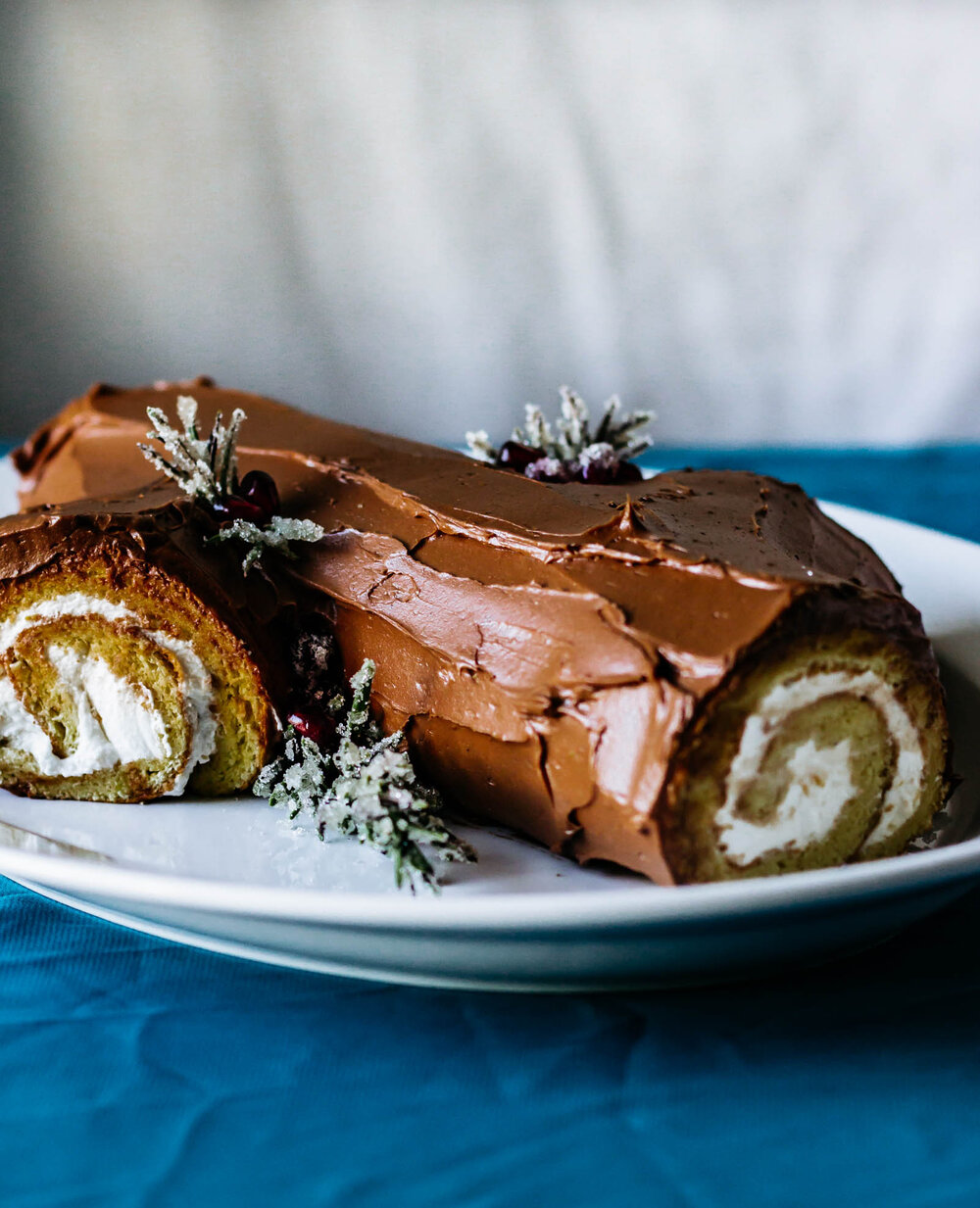
Cardamom, Orange, and Ricotta Buche de Noel
Ingredients
- 8 eggs, separated
- 2/3 cup + 2 tbsp (140 g) granulated sugar
- 1 1/2 tsp granulated sugar
- 1 tbsp orange juice
- 1/2 tsp orange zest
- 1 tsp ground cardamom
- 1/2 cup + 1 tbsp (80 g) all purpose flour
- 1/8 tsp kosher salt
- powdered sugar, for dusting
- 1/2 cup (115 g) heavy cream
- 1/4 cup (30 g) powdered sugar
- 1/2 cup (110 g) whole milk ricotta cheese
- 1 tsp orange zest
- 1 tsp vanilla extract
- a pinch of salt
- 1 stick (226 g) unsalted butter, softened
- 1 tbsp vanilla extract
- 1/2 tsp ground cardamom
- 1 1/2 cup (70 g) powdered sugar
- 1/4 tsp kosher salt
- 6 oz dark chocolate
Instructions
- Preheat the oven to 400° F. Line a rimmed half-sheet pan with parchment paper and set aside.
- In the bowl of a stand mixer fitted with the whisk attachment, begin whipping the egg whites on medium speed. Once the whites become frothy, add the 1 1/2 tsp sugar and increase speed to medium-high. Whip until medium peaks form, then transfer to a large bowl and set aside.
- In that same mixing bowl, combine egg yolks, remaining 140 g of sugar, orange juice, and orange zest. Whip on medium-high speed for about 4 minutes, until the mixture is thick and pale.
- Meanwhile, whisk together flour, cardamom, and salt in a small bowl.
- When the egg yolks are voluminous, remove the bowl from the stand mixer. Sprinkle half of the flour over the top of the yolks and gently fold in using a rubber spatula. Repeat with the remaining flour and mix carefully, just until no flour streaks remain.
- Add 1/3 of the whipped egg whites to the mixture and gently fold them in. Repeat in two more additions with the remaining whites. When everything is folded in, the batter should be smooth and no streaks of egg whites should remain.
- Pour into your prepared pan and spread into an even layer. Bake for 10-15 minutes, until the cake is golden brown and beginning to pull away from the sides of the pan. Cool for 10 minutes in the pan.
- After the cake has been cooling for about 10 minutes, dust the top of the cake with a thin layer of powdered sugar. Turn the cake out onto a large clean dish towel and use a sharp knife to trim the edges.
- Then working on a longer end and using the towel, gently roll the cake into a log. Let cool for at least 20 minutes before unrolling.
- In a medium bowl, stir together ricotta, orange zest, vanilla, and salt.
- In the bowl of a stand mixer fitted with the whisk attachment, whip heavy cream on medium speed until soft peaks begin to form. Add the powdered sugar, and continue whipping until combined and thickened.
- Gently fold whipped cream into the ricotta mixture and smooth in an even layer over the surface of your unrolled cake.
- Chill the cake for about 30 minutes, or until you are ready to frost.
- Melt the chocolate in the microwave or in a bowl over a double-boiler. Set aside to cool to room temperature.
- In the bowl of a stand mixer fitted with the paddle attachment, combine butter, cardamom, salt, and vanilla. Beat for 1-2 minutes until butter is soft and smooth.
- Add the powdered sugar and continue beating until frosting is thick and all of the powdered sugar has been combined.
- With the mixer on low speed, gradually stream in chocolate, mixing until homogenized. Scrape down the sides of the bowl and then mix for another minute or so, to ensure that everything is completely combined.
- Use a small offset spatula to coat the cake log in a layer of chocolate frosting.
- Use a serrated knife to trim the edges, just so that they are straight and even. Cut a piece about 4” long from the end of the log and then cut that piece in half on a diagonal.
- Place each diagonal piece on the edge of the log, to look like a yule log. Fill in the gaps with frosting and then use the spatula to create waves in the log to look like bark. Decorated with pomegranate arils, rosemary springs, cranberries, or any over desired foresty-decorations.


